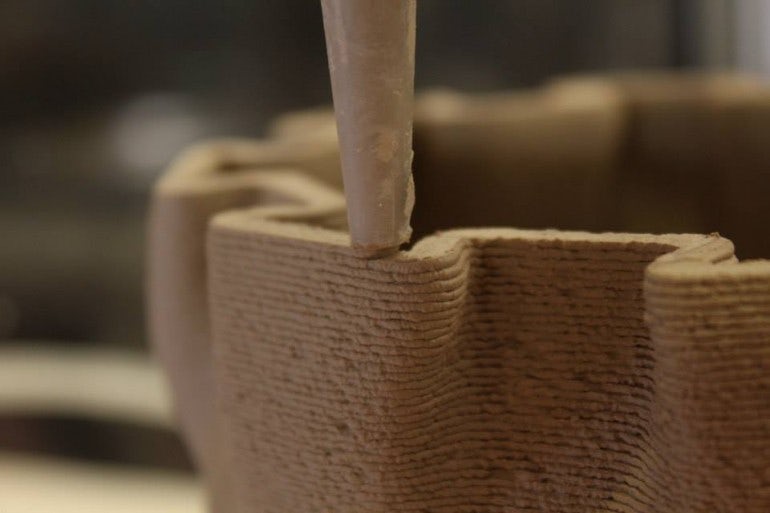Resins. Metals. Ice cream. Wood. The kinds of materials we’ve been able to stuff into a 3D printer and extrude to form actually useful products and structures is steadily growing, presenting exciting new prospects for experimental architecture. Looking for a low-cost solution for a global housing crisis, philanthropic Italian design lab WASP (World’s Advanced Saving Project) explored what 3D printing can do with one readily available completely sustainable substance: mud.

Dirt in its various forms has been an essential building tool since the construction of the pyramids on through modern-day mass production of rammed-earth bricks, but what WASP demonstrated during Maker Faire Rome,Makemagazine reports, was the new ease with which a mud hut can now be erected. WASP’s 20-foot-tall mud extruder, equipped with a composite of clay and sand, was able to construct a 3-foot-tall model during the fair (“It takes weeks to print a real house, so we will print a smaller building because we only have two days,” WASP founder Massimo Moretti had forewarned).

The mud had been piped in the form of trapezoidal trusses layered on top of one another to form a double-layered, freestanding cylindrical structure, illustrating a departure from the geometric constraints of the standard rectangular mud brick. It actually bore a very close resemblance to its inspiration, the nests of the mud dauber wasp (a nod to the lab’s name).
Last year, WASP constructed a prototype house using the same techniques and materials:
Because the extruder is easily dismantled, transported and assembled on-site by as few as two people, its potential benefit to remote areas where building materials are scarce runs high. They will each, hopefully, look more like a home and less like a hive.




